Latest News
Genealogy and Volunteers
August 12, 2012 by ramona
Filed under Articles, Genealogy Research Resources, Latest News, Making genealogy Connections; Reaching out
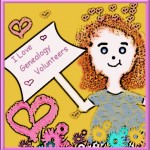 Whether you have been researching your family tree for a long time, or are just getting started, it is likely you have benefited from the services of a genealogy volunteer.
Whether you have been researching your family tree for a long time, or are just getting started, it is likely you have benefited from the services of a genealogy volunteer.
Genealogy volunteers are often hiding behind the titles indexer, transcriber and look up. You can find them anywhere in the world from local libraries to National Archives.
The work they do often helps thousands if not millions of family history hunters across the globe on a daily basis.
One great example of genealogical volunteerism is the progress that has been made on the 1940 US Census. With the aid of tens of thousands of Family Search volunteers, the 1940 census has now been fully indexed…after only five months. As if that is not accomplishment enough, other volunteers were busy adding to the Historical Record Collections for several countries.
In fact, anywhere you find free genealogical resources there are genealogy volunteers behind it. Some genealogy volunteer groups past and present that deserve a mention are:
· Genealogy Helplist
· Genie Angels
· USGenWeb Project
· American Local History Network
· Missouri Slaves/Slaveowner Database
· Random Acts of Genealogical Kindness
· Olive Tree Genealogy
No matter what size the project from indexing a census or helping out at a local library. Genealogy volunteers deserve a huge thank you from all of us genealogy beginners for making our ancestors a little easier to find.
Be prepared to start tracking down the missing branches on your family tree with Family Tree Charts and Research Tracking forms available with your 30- Day free trial to Genealogy Beginner.
Gaming for Ancestors
August 7, 2012 by ramona
Filed under Articles, Family History, General Tips, Latest News, Preserving Your Family Tree
 If you are looking for a fun and unusual way to record your family tree you might want to consider playing Family Village.
If you are looking for a fun and unusual way to record your family tree you might want to consider playing Family Village.
Family Village is a facebook game that allows family history hunters to build a family tree in game format. The premise of the game is to invite relatives to play and create a database of ancestors along with living family members by entering their information into the game.
How Does this Create a Database of Ancestors?
The game allows you to go on quests and build a village by entering all the usual types of genealogical information about your ancestors such as birth, marriage and death documents and photos. It allows you to enter immigration information, maps and newspaper articles as well as adding occupations. You can even build avatars of your ancestors.
In their vision statement game developer Finium says that their purpose in developing the game is to provide meaningful games that will aid family tree hunters in preserving their family history.
Family Village is a great way to connect with relatives and get the whole family involved in genealogy.
Ships Lists: Free Genealogy Resource
August 5, 2012 by ramona
Filed under Articles, Genealogy Research Resources, Latest News, Sharing Genealogy Information
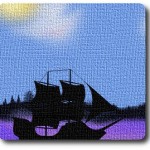 Genealogy beginners looking for immigrant ancestors should head straight over and bookmark The Immigrant Ships Transcribers Guild (ISTG) website.
Genealogy beginners looking for immigrant ancestors should head straight over and bookmark The Immigrant Ships Transcribers Guild (ISTG) website.
The ISTG is a volunteer group that has been working since 1998 to transcribe ships lists on a global scale and publish them on the internet. In the years since its inception, the ISTG website has grown to include volumes of passenger manifests.
The scale of the site may make navigating it a little intimidating to the novice family history hunter. A short tutorial will help make things a little easier.
How to Search the ISTG
Step one:
Locate the search box on the upper left hand corner of the opening page and enter the surname you are researching. This should move you forward to a page with a long list of matches.
Step Two:
On the upper right hand corner of the page, you will find an option for advanced searches…click the option.
The advanced search will give you four text boxes
1. All – will return pages that include all of the terms entered
2. Phrase – will return pages matching the exact phrase
3. Any – will return pages that match any of the terms – in no specific order
4. None – includes other selected items and must be used in tandem with other fields
For example, entering “Alexander McCallum” into the “All” field returns ships named Alexander as well as passengers surnamed Alexander and McCallum.
The same search entered in the “Phrase” field returns only passengers named Alexander McCallum.
In the Any field these search terms return the same results as entering into the “All” field. It is good to use the “None” field in tandem as you can enter terms you do not want matched in order to narrow your search.
Once you are comfortable using the search function you will be free to search some of this sites great free resources from Jacobite rebellion ships to New York arrivals.
One great feature of this site that you will not want to miss is the ISTG compass, which is a tool to simplify your searches by breaking down resources into consumable information bites.
The ISTG is another site that relies heavily on volunteer transcribers, if you would like to help check out their Guild Application for more information.
Make sure you are prepared for your visit to The Immigrant Ships Transcribers Guild with Genealogy Beginners Family Tree Starter Kit, available with your 30-day free membership.
Research Americas Earliest Immigrants FREE
July 30, 2012 by ramona
Filed under Articles, Genealogy Research Resources, Latest News, Sharing Genealogy Information
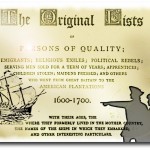 Family Tree fanatics wishing to research the earliest immigrants to the Americas are in for a real treat with this fantastic book published in 1874 and titled The Original Lists.
Family Tree fanatics wishing to research the earliest immigrants to the Americas are in for a real treat with this fantastic book published in 1874 and titled The Original Lists.
The book will be of great interest to any family history seekers whose family came to the Americas during 1600-1700.
Its contents are comprised of the original lists of:
- Persons of quality
- Emigrants
- Religious exiles
- Political rebels
- Serving men sold for a term of years
- Apprentices
- Children stolen
- Maidens pressed; and others who went from Great Britain to the American Plantations, 1600-1700
It is exciting to note that within the pages of this fantastic resource is a list of early immigrant passengers that came over on the Mayflower (1620), The Fortune (1621), The Anne and Little James(1623).
Along with this bounty of genealogical booty, the book lists the ages of individuals, the ships they embarked on and various other interesting details such as the following:
“The bill of mortality of the said rebells that dyed since they were reced on board and were thrown overboard out of the said ship are these uiz. December the Sixteenth Thomas Venner, Seventeenth W* Guppy, Eighteenth John Willis, Nineteenth Edward Venn, the same day Philip Cox one and Twentieth Robert Vawter, Five and Twentieth Wm Greenway, January the first Peter Bird, Witnessed by the commander, March and officers’ of the said ship this Eigth day of January 1685.”
John May
John Penn
John Maddison
Gabriel Whithorn
Malcum Fraser
One very interesting chapter is “Entries relating to America taken from the Indexes to the Patent Rolls, commencing 4 James I 1606 and ending 14 William III 1702.” The entries in this section are very intriguing and include entries such as:
“Grant of Incorporation, by the name of the treasurer and Company of Adventurers and Planters in the city of London and Bristol, For the Colony and Plantation in Newfoundland.”
Taken from manuscripts held in the State Department; Her Majesty’s Public Record Office, England, this incredible resource is filled from cover to cover with fascinating histories of the earliest pioneers to the Americas.
Before you start flipping through the pages, remember to download your Family Tree Charts and Research Tracking forms available with your 30- Day free trial to Genealogy Beginner.
Read The Original Lists at Internet Archives
Obama Descendant of First Slave?
July 29, 2012 by ramona
Filed under Articles, Latest News
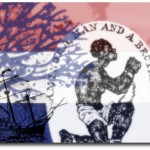 Since first starting out on the election trail, President Barack Obama’s family history has been a subject of great interest. In this week’s news, Obama’s family tree has become even more noteworthy as genealogist claim to trace his descent from the American Colonies first documented slave.
Since first starting out on the election trail, President Barack Obama’s family history has been a subject of great interest. In this week’s news, Obama’s family tree has become even more noteworthy as genealogist claim to trace his descent from the American Colonies first documented slave.
The Roots of Slavery
The commencement of slavery in the US began in Virginia with the arrival of 20 Africans aboard a Dutch Man – o – War. At its inception, slavery was not legally recognized and the status of Africans was documented as indentured servants. This can be seen in the colonial court records of Virginia in a document dating from 1625 that notes “Antonio the Negro” as a servant.
In those early times, there was no distinction between black and white indentured servants. As a result, it was common for black and white indentured servants in addition to “Poor whites” to associate closely, working side by side, becoming friends and often intermarrying.
John Punch
In the year 1640 one black and two white indentured servants ran away from the Virginia plantation where they worked. Eventually, the tree escapees were captured and returned to the plantation. Upon their return, the Virginia General Court passed a sentence of four additional years of servitude onto the white runaways while African John Punch received a punishment of life in servitude, making him the first (documented) black slave in American history.
The Ancestral Connection
Genealogist conducting research for Ancestry.com claim to have traced the descent of the American Commander and Chief to Punch; surprisingly through Obama’s maternal white line. The president’s mother, Stanley Ann Dunham is reported to have a line of descent to white landowners in the Virginia colonies.
The genealogists contend that it is through a Dunham woman and John Punch that President Obama’s line descends. If their findings are accurate, Punch is Obama’s 11th great grandfather.
If this is true, there is a certain poetic justice in that a descendant of the first black slave was to become the first black president.
When Genealogy and History Meet
July 28, 2012 by ramona
Filed under Articles, Latest News
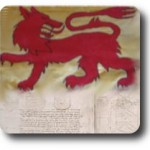 While all family history researchers love to find surprising information during our searches it is doubly exciting when research leads to the discovery of documents of great historical importance.
While all family history researchers love to find surprising information during our searches it is doubly exciting when research leads to the discovery of documents of great historical importance.
One such discovery was made recently at the London College of Arms.
It is within the London College of Arms where the official registrations of Coats of Arms and pedigrees for the titled nobility of Great Britain are held. It is also the place to go if there is a knight or a Royal in your family tree.
Family History and Armorial Bearings
A Coat of Arms or “Armorial Bearings” are a mater of heredity that can only be born by a direct male descendant and legitimate heir of the person to whom they were first granted.
At the London College of Arms, the individual known as the “Officer in Waiting” acts as advisor to those wishing to research their paternal line. His role is to inform petitioners of costs and give direction concerning genealogical research. It is however, the persons known as Heralds who since medieval times have acted as genealogists and in fact developed scientific genealogical methods.
Heralds or “Officers of Arms” are experts at delving into centuries old manuscripts to search out pedigrees listing armigerous ancestors.
The Discovery
The London College of Arms has in their official collection, approximately 750 volumes of manuscripts listing armorials and pedigrees for almost every generation of British, Scottish, Irish and Welsh nobles from 1530 to 1688. Apart from this main collection exists an unofficial collection of particular genealogical and heraldic importance that dates from an even earlier period.
It is among the latter collection that the recent discovery was made of a rare accounting document that recorded the undertakings of Italian bankers in early 15th century London. The document, belonging to Domenicio Villani & Partners, a Florentine merchant-banking company, was found nearly concealed under a coat of arms. Information contained in the papers gives great insight into the history of trade in medieval Britain.
You might wonder what these papers were doing in the London College of Arms. That is actually no mystery as during medieval times, good quality paper was scarce and repurposing was quite commonplace.
Irish Surname Resources
July 23, 2012 by ramona
Filed under Articles, Genealogy and Surnames, Introduction to Genealogy, Latest News
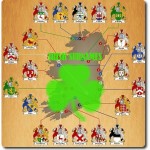 Are you an O’Mally or an O’Neil?
Are you an O’Mally or an O’Neil?
If you are a genealogy beginner in search of Irish surname resources you are in luck because you are among the millions of fortunate family tree fanatics who can draw from a wide variety of genealogy resources.
To get started you might want to check out this fantastic Irish Surname Infographic which gives an at-a-glance overview of the top twenty most common Irish surnames.
Other information you can find on the infographic include:
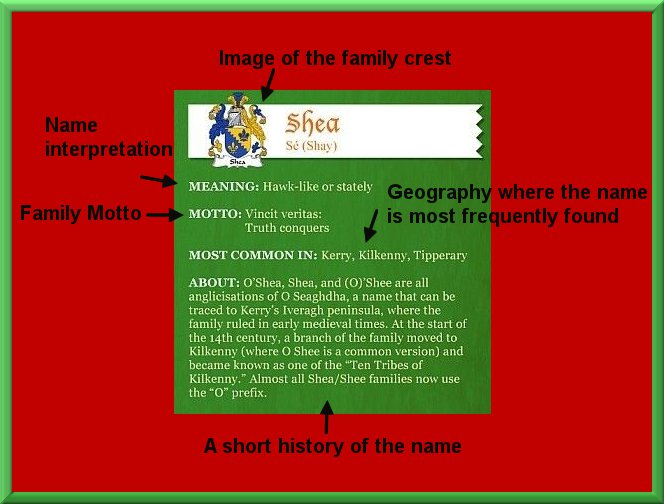
Another fantastic resource to check out is Irish Central an online magazine packed with all things Irish including an in depth article explaining the top 100 Irish surnames.If you already know about your Irish surname and you are ready to start digging deep for your Irish roots try stopping by Irish Genealogy where you can search almost three million pre-20th century Church records for FREE.
Want more resources? Try Genuki Ireland for links on where to research:
INFORMATION RELATED TO ALL OF IRELAND
|
|
Before you get started on your Irish family history research, don’t forget to download your Research tracking forms and Family Tree Charts. Available with your 30-Day FREE TRIAL MEMBERSHIP to Genealogy Beginner
Newest FREE Family Tree Resources
July 21, 2012 by ramona
Filed under Articles, Family Search The LDS, Genealogy Records 101, Latest News
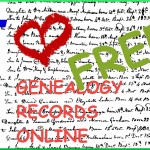 If you have been waiting for new genealogy resources to become available online, your wait may be over. The month of July 2012 saw some great additions to genealogy resources by FamilySearch.
If you have been waiting for new genealogy resources to become available online, your wait may be over. The month of July 2012 saw some great additions to genealogy resources by FamilySearch.
The new additions span the globe from the USA to Asia…some dating from the 1400s.
Keep reading for a complete list of the July’s new records:
| Record For | Record Type | Date Added |
|
United States |
||
| Alabama, Madison County | Chancery and Circuit Court Records, 1847-1950 | 10 Jul 2012 |
| California, San Mateo | County Records, 1856-1991 | 17 Jul 2012 |
| Indiana | Marriages, 1811-1959 | 7 Jul 2012 |
| Maine | State Archive Collections, 1790-1966 | 10 Jul 2012 |
| Missouri, Jackson | County Voter Registration Records, 1928-1956 | 17 Jul 2012 |
| Nevada | County Birth and Death Records, 1871-1992 | 10 Jul 2012 |
| New York, Orange County | Probate records | 10 Jul 2012 |
| Oregon | Douglas County Records, 1852-1952 | 10 Jul 2012 |
| Texas | Deaths, 1977-1986 | 19 Jul 2012 |
| United States | Census, 1940 | 6 Jul 2012 |
| United States | Social Security Death Index | 2 Jul 2012 |
| United States | Civil War Widows and Other Dependents Pension Files | 7 Jul 2012 |
| United States | National Homes for Disabled Volunteer Soldiers, 1866-1938 | 10 Jul 2012 |
| Utah | County Marriages, 1887-1937 | 6 Jul 2012 |
| Utah | Marriages 1887-1966 | 16 Jul 2012 |
|
Canada |
||
| Canada | Census, 1916 | 3 Jul 2012 |
| Nova Scotia | Vital Records, 1763-1957 | 3 Jul 2012 |
| Ontario | Marriages, 1869-1927 | 6 Jul 2012 |
| Quebec | Notarial Records, 1800-1900 | 17 Jul 2012 |
| Saskatchewan | Probate Estate Files 1887-1931 | 6 Jul 2012 |
|
Great Britain |
||
| Scotland | Census, 1881 | 2 Jul 2012 |
| Scotland | Census, 1891 | 2 Jul 2012 |
|
Western Europe |
||
| Italy, L’Aquila, Camarda, Parrocchia di San Giovanni Battista | Catholic Church Records, 1606-1941 | 3 Jul 2012 |
| Italy, Palermo, Diocesi di Monreale | Catholic Church Records, 1531-1998 | 3 Jul 2012 |
| Italy, Trento, Diocesi di Trento, Catholic | Catholic Church Records, 1548-1937 | 21 Jul 2012 |
| Italy, Vicenza, Casoni, Parocchia di San Rocco, | Catholic Church Records, 1597-1937 | 3 Jul 2012 |
| Spain, Province of Sevilla | Municipal Records, 1903-1918 | 10 Jul 2012 |
| Spain, Province of Tarragona | Records of Widows and Orphans of Spanish Officials, 1860-1960 | 10 Jul 2012 |
|
Eastern Europe |
||
| Czech Republic | Censuses, 1843-1921 | 10 Jul 2012 |
| Czech Republic | Land Records, 1450-1889 | 10 Jul 2012 |
| Poland | Roman Catholic Church Books, | 16 Jul 2012 |
| Slovakia | Church and Synagogue Books, 1592-1910 | 19 Jul 2012 |
|
South America |
||
| Chile, Santiago | Collection of Genealogies, 1500-1980 | 11 Jul 2012 |
| Chile, Santiago | Cementerio General, 1821-2011 | 11 Jul 2012 |
| Peru, Lima | Civil Registration, 1874-1996 | 11 Jul 2012 |
| Peru, La Libertad | Civil Registration, 1903-1997 | 2 Jul 2012 |
| Dominican Republic | Civil Registration, 1801-2010 | 11 Jul 2012 |
| Ecuador | Catholic Church Records, 1565-1996 | 2 Jul 2012 |
| Guatemala | Civil Registration, 1877-2008 | 3 Jul 2012 |
| Portugal, Braga | Catholic Church Records 1530-1911 | 11 Jul 2012 |
| Portugal, Castelo Branco | Catholic Church Records | 20 Jul 2012 |
| Portugal, Diocese of Lamego | Catholic Church Records, 1529-1916 | 11 Jul 2012 |
| Portugal, Diocese of Vila Real | Catholic Church Records, 1575-1975 | 11 Jul 2012 |
|
Asia |
||
| Korea | Collection of Genealogies, 1500-2009 | 10 Jul 2012 |
|
South Africa |
||
| South Africa | Free State Dutch Reformed Church Records, 1848-1956 | 19 Jul 2012 |
| South Africa | Orange Free State, Estate Files, 1951-2004 | 11 Jul 2012 |
| South Africa, Western Cape | Various Records | 10 Jul 2012 |
Before you tackle all of these new family history records and break your genealogy brick wall, remember to download your Research tracking forms and Family Tree Charts. Available with your 30-Day FREE TRIAL MEMBERSHIP to Genealogy Beginner
Pinning your Family Tree
July 14, 2012 by ramona
Filed under Articles, Family History, Latest News, Preserving Your Family Tree
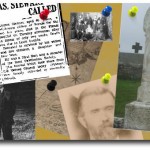 Well it certainly did not take long for family tree fanatics to make use of social media “pinning” sites.
Well it certainly did not take long for family tree fanatics to make use of social media “pinning” sites.
If you are new to social media here is what you need to know about pinning. Pinning is a visual way of sharing your interests via a virtual pin board. You can create boards based on a singular theme such as genealogy, family tree, family history etc. Ultimately, what these sites do is share links through images. One way to think of it is as a visual bookmark.
Pinning for Genealogy
Pintrest
Pintrest can be used as a fantastic tool for organizing your genealogy, sharing resources and following others with like interests. The only catch is that in order to use Pintrest you must first receive an invitation.
Pinspire
If you do not have an invitation to Pintrest, you can try out its identical twin Pinspire. Pinspire is identical to pintrest with one exception…no invitation required.
If you want to check out more pinning sites, Minglewing, Piccsy and Storify are good places to start.
Uencounter.me
The newest kid on the pinning block is Uencounter.me a pinning site with a purpose. Uencounter.me is a mapping site that focuses on letting the user built a visual map of their family tree.
Building a visual map of your ancestors can be a very helpful tool for your family history research. However, the possibilities for information sharing with this type of application are easy to see.
Imagine the map as a resource for finding ancestors by location. Although other search sites come close, if you are not familiar with the geography of the area you are searching… it is easy to become confused and miss something.
For example:
My line of McCallum’s hail from Lanarkshire Scotland can be found in the census at Firth, Carstairs and Carnwath. While that may not mean much on a data screen, having a visual of just how close those communities are, helps give some perspective to your search.
Using Uencounter.me
The process starts by bringing up the map and asking you to zoom into your area of interest. You can also pin a place by adding the address.
Drop down menus let you select:
- Type of Encounter: Genealogy,
- Dates to and from: a date range from the present to the year zero,
- People Here Are / were: ancestors
- This pin relates to: an ancestor
- Specifically: Birth, Marriage, Death, other
For those of you who want to pin live relatives do not worry as the site gives the option for a privacy setting on an individual basis. As you move forward to the next step you will get a pop up box that allows for notes, you can even add photos.
While Uencounter.me shows all the earmarks of a superior genealogy tool, a searchable name function would make this an invaluable free resource for genealogists everywhere.
Need to learn more about finding your ancestors through the geography of genealogy check out Genealogy Beginners lesson on Searching by Place. Available with your 30-day free trial membership.
Genealogy: Online Ethics and Etiquette
July 11, 2012 by ramona
Filed under Articles, Genealogy Standards & Guidelines, Introduction to Genealogy, Latest News
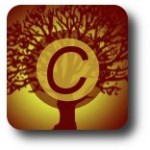 From the novice to the veteran family historian we can all agree that the vast amount of information available online for genealogy research is a great blessing. Therefore, it is more important than ever to become familiar with the ethical practices and etiquette involved in information sharing when it comes to our family trees.
From the novice to the veteran family historian we can all agree that the vast amount of information available online for genealogy research is a great blessing. Therefore, it is more important than ever to become familiar with the ethical practices and etiquette involved in information sharing when it comes to our family trees.
On sites such as Ancestry.com and Find a Grave, a great deal of the information is made available through the contributions of fellow researchers. Thus, it is becoming easier for genealogy beginners to discover documents and photos at the touch of a few keys.
Family Tree Ethics and Etiquette
Published genealogies can be a truly wonderful resource, they aid us in our own research and quite often lead to the discovery of cousins we never knew we had. The down side of this is that through innocent error and sometimes intent, the genealogical community experiences a degree of unethical behavior and bad manners.
It is very exciting to find published information about your ancestors online however, before you snag that birth, marriage, death record or photo of G.G. Grandma:
1. Ask Permission
This is a common scenario on sites like Ancestry.com where photos and records are often public. This is because Ancestry.com is meant to be a collaborative site and although it states in their Community Guidelines that “Any information you post in our community is public and can be copied, modified and distributed by others” you should still ask permission of the original poster.
2. Give Credit
When using published documents or photos always thank the original contributor A little blurb that reads – Photo Courtesy of Ms. Nice Genealogist – is just good manners.
To learn more about this subject check out Genealogy Beginner’s lesson # 1. Genealogy Standards and Guidelines: You Need to Know This First, available with your 30-day free trial membership.
